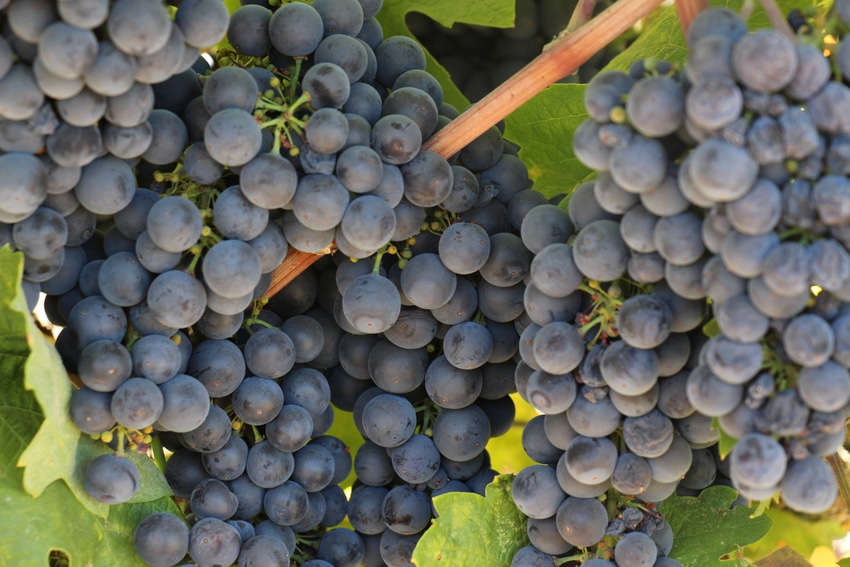
Preliminary figures from the California farm numbers crunching folks - the National Agricultural Statistics Service (NASS) at Sacramento - peg the state’s 2016 grape crush at 4,196,723 tons, an 8.5 percent increase from 2015’s 3.86 million tons.
As expected, red varietals were the largest share of all grapes crushed at 2,255,300 tons, a 10.5 percent boost from 2015. The 2016 white variety crush increased nearly 5 percent to 1,745,490 tons compared to the year earlier.
Tonnage of raisin-type varieties increased 6.2 percent to 98,205 tons. Tonnage of table-type jumped 38.3 percent higher to 97,729 tons, compared to last year.
Allied Grape Growers (AGG) Vice-President Jeff Bitter of Fresno, Calif., called the 2016 NASS wine grape crush tonnage figure larger than the two previous two years, and noted the crop was slightly below an average-sized California crop.
“Based on bearing acreage estimates and multi-year yield analysis, an average crush would have landed at right about 4.2 million tons,” Bitter said.
He adds that the smaller crops over the previous two years were likely negatively impacted by drought. Bitter believes that now with two good rainy years in a row that it could help produce an ample wine grape crop in this year.
AVERAGE PRICE
According to the NASS report, the 2016 average price of all varieties was $750.27, an 11.7 percent increase from 2015.
AGG’s Bitter responded to the price increase, saying the price increase “demonstrates the overall stability of industry supply/demand, but more importantly signaling the transition of supply away from the value segments and more toward the mid and upper sectors of the business.”
Looking at the NASS stats by category, 2016 average prices for red wine grapes totaled $899.44 per ton, a healthy 13.9 percent increase from 2015; white wine grapes, $594.01 - up 9.9 percent from 2015; raisin grapes at $213.64, a disappointing 13.7 percent drop; and worst yet was $153.05 per ton for table grapes, down nearly 40 percent.
In 2016, Chardonnay continued with the largest percentage of the total crush volume with 16.0 percent; followed in second place by Cabernet Sauvignon 13.3 percent.
The next eight highest grape crush percentages were all wine grape varieties. Thompson Seedless, the leading raisin grape variety crushed for 2016, represented 2 percent of the crush total.
NASS says District 13, which includes Madera, Fresno, Alpine, Mono, plus Inyo counties and combined with Kings and Tulare counties north of Nevada Avenue (Avenue 192), produced the lion’s share of the state’s crush - 1,333,124 tons. The average price per ton in District 13 totaled $301.59.
Grapes grown in District 4 - Napa County - received the highest average price of $4,666.35 per ton, 7.3 percent higher than 2015.
District 3 - Sonoma and Marin counties - generated the second highest return at $2,584.87/ton, up 5.9 percent.
NASS reports the 2016 Chardonnay price of $880.51 was up 11.7 percent, and the Cabernet Sauvignon price of $1,432.73 was up 8.8 percent from 2015.
The 2016 average price for Zinfandel was $603.14, up 4.9 percent from last year. Merlot pricing edged 3.3 percent higher from 2015 to $765.34 per ton.
The full NASS Grape Crush Report is available online at www.nass.usda.gov/ca. The Final Grape Crush Report will be released March 10, 2017.
About the Author(s)
You May Also Like






